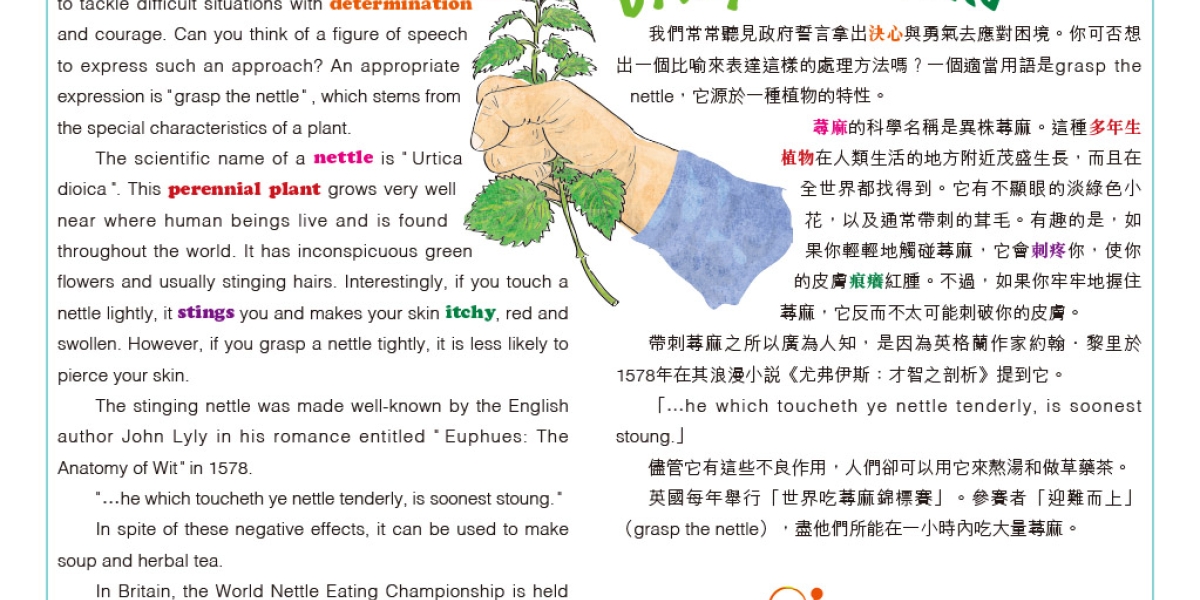
Grasp the nettle
We always hear that the government vows to tackle difficult situations with determination and courage. Can you think of a figure of speech to express such an approach? An appropriate expression is " grasp the nettle " , which stems from the special characteristics of a plant.
The scientific name of a nettle is " Urtica dioica ". This perennial plant grows very well near where human beings live and is found throughout the world. It has inconspicuous green flowers and usually stinging hairs. Interestingly, if you touch a nettle lightly, it stings you and makes your skin itchy, red and swollen. However, if you grasp a nettle tightly, it is less likely to pierce your skin.
The stinging nettle was made well-known by the English author John Lyly in his romance entitled " Euphues: The Anatomy of Wit " in 1578.
" …he which toucheth ye nettle tenderly, is soonest stoung. "
In spite of these negative effects, it can be used to make soup and herbal tea.
In Britain, the World Nettle Eating Championship is held every year, where contestants " grasp the nettle " to eat as much of the plant as they can in an hour.
我們常常聽見政府誓言拿出決心與勇氣去應對困境。你可否想出一個比喻來表達這樣的處理方法嗎?一個適當用語是grasp the nettle,它源於一種植物的特性。
蕁麻的科學名稱是異株蕁麻。這種多年生植物在人類生活的地方附近茂盛生長,而且在全世界都找得到。它有不顯眼的淡綠色小花,以及通常帶刺的茸毛。有趣的是,如果你輕輕地觸碰蕁麻,它會刺疼你,使你的皮膚痕癢紅腫。不過,如果你牢牢地握住蕁麻,它反而不太可能刺破你的皮膚。
帶刺蕁麻之所以廣為人知,是因為英格蘭作家約翰・黎里於1578年在其浪漫小說《尤弗伊斯:才智之剖析》提到它。
「…he which toucheth ye nettle tenderly, is soonest stoung.」
儘管它有這些不良作用,人們卻可以用它來熬湯和做草藥茶。
英國每年舉行「世界吃蕁麻錦標賽」。參賽者「迎難而上」(grasp the nettle),盡他們所能在一小時內吃大量蕁麻。

捐款支持公教報 http://kkp.org.hk/donation







